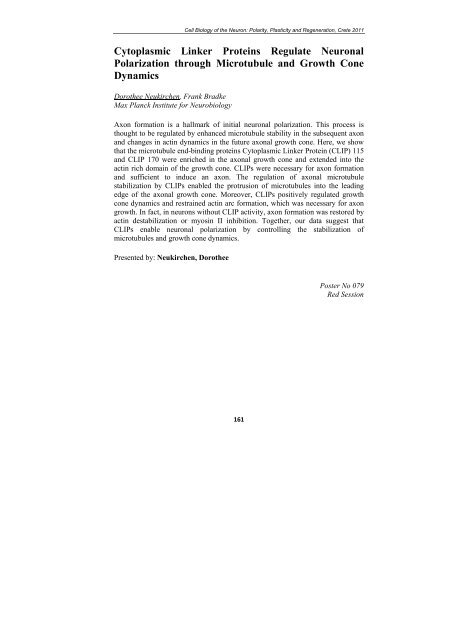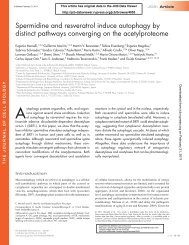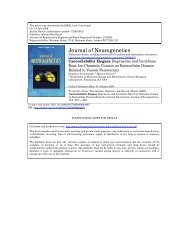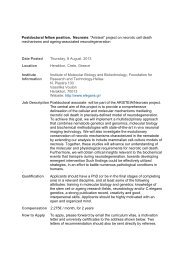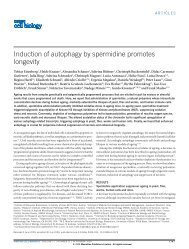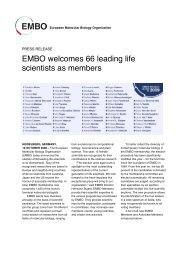CELL BIOLOGY OF THE NEURON Polarity ... - Tavernarakis Lab
CELL BIOLOGY OF THE NEURON Polarity ... - Tavernarakis Lab
CELL BIOLOGY OF THE NEURON Polarity ... - Tavernarakis Lab
You also want an ePaper? Increase the reach of your titles
YUMPU automatically turns print PDFs into web optimized ePapers that Google loves.
Cell Biology of the Neuron: <strong>Polarity</strong>, Plasticity and Regeneration, Crete 2011<br />
Cytoplasmic Linker Proteins Regulate Neuronal<br />
Polarization through Microtubule and Growth Cone<br />
Dynamics<br />
Dorothee Neukirchen, Frank Bradke<br />
Max Planck Institute for Neurobiology<br />
Axon formation is a hallmark of initial neuronal polarization. This process is<br />
thought to be regulated by enhanced microtubule stability in the subsequent axon<br />
and changes in actin dynamics in the future axonal growth cone. Here, we show<br />
that the microtubule end-binding proteins Cytoplasmic Linker Protein (CLIP) 115<br />
and CLIP 170 were enriched in the axonal growth cone and extended into the<br />
actin rich domain of the growth cone. CLIPs were necessary for axon formation<br />
and sufficient to induce an axon. The regulation of axonal microtubule<br />
stabilization by CLIPs enabled the protrusion of microtubules into the leading<br />
edge of the axonal growth cone. Moreover, CLIPs positively regulated growth<br />
cone dynamics and restrained actin arc formation, which was necessary for axon<br />
growth. In fact, in neurons without CLIP activity, axon formation was restored by<br />
actin destabilization or myosin II inhibition. Together, our data suggest that<br />
CLIPs enable neuronal polarization by controlling the stabilization of<br />
microtubules and growth cone dynamics.<br />
Presented by: Neukirchen, Dorothee<br />
161<br />
Poster No 079<br />
Red Session


